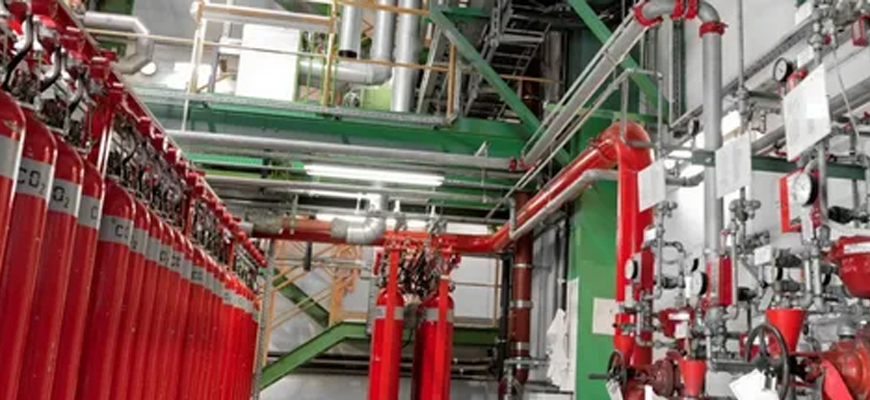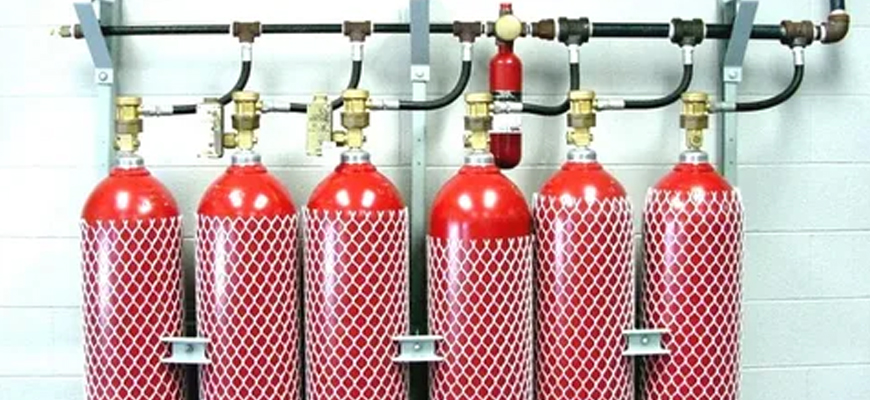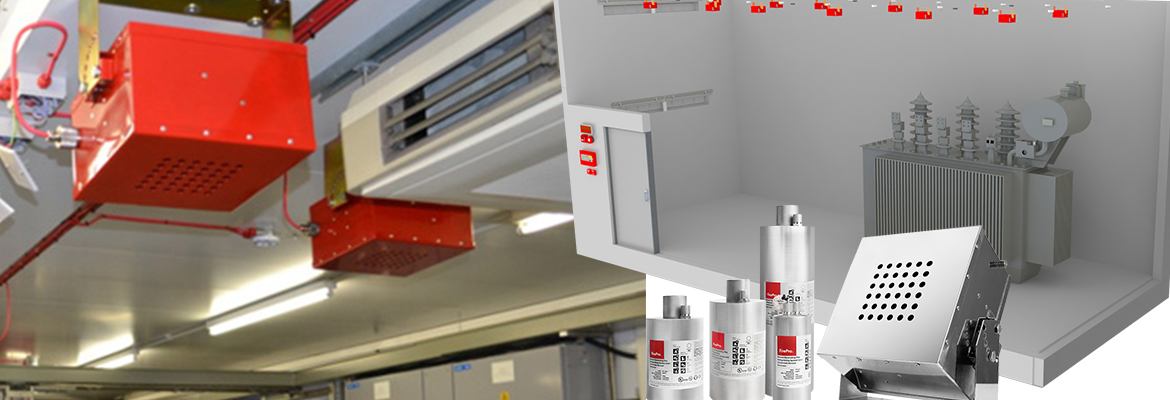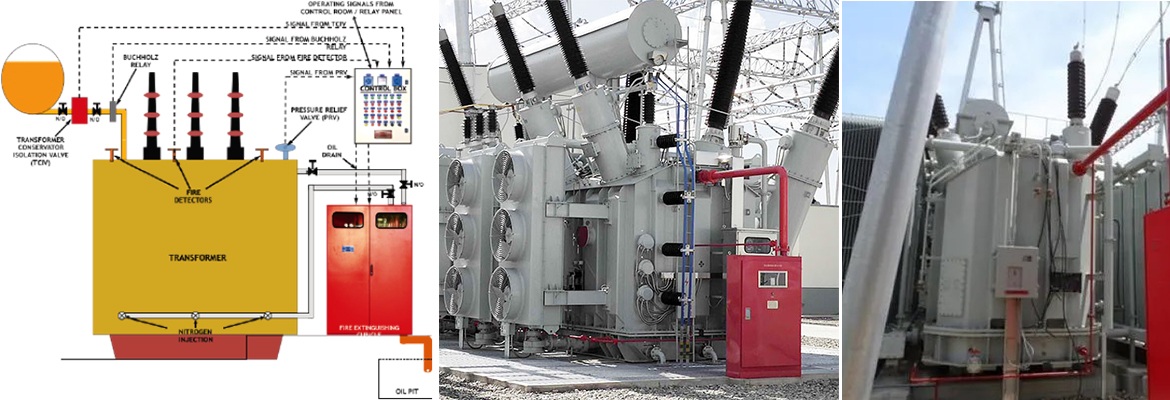- info@microfire.in
- +(91) 99110 01612 | 99244 23947
Fire Suppression System
Clean Agent Fire Suppression

According to the National Fire Protection Association (NFPA), a clean agent is an electrically non-conducting, volatile, or gaseous fire extinguishing that does not leave a residue upon evaporation. A clean agent fire suppression system uses either a chemical or inert gas to suppress a fire at the inception stage before it can grow and is incredibly effective in extinguishing Class A, B, and C fires.Clean agent fire suppression systems are safe to use in occupied spaces, require no clean up after discharge, and are environmentally friendly with a short to no atmospheric lifetime and a low Global Warming Potential (GWP). Systems are designed around providing total flood protection for small enclosed areas or entire rooms containing sensitive documents or equipment. The most common types of clean agent systems use chemical agents like FM-200™ (HFC-227ea) and 3M™ Novec™ 1230 Fire Protection Fluid or inert gases, which are made up of gases like nitrogen, argon, and carbon dioxide. All clean agents are stored as either a gas or liquid, and when the system activates, it releases the clean agent as a gas to suppress the fire. Upon discharge, the clean agent removes or disrupts one of three elements needed to sustain a fire – heat, oxygen, or the fuel source. Most clean agent fire suppression systems reach extinguishing concentration levels in just 10 seconds or less, making them highly efficient in suppressing a fire before significant damage can be done. Because clean agents quickly evaporate, there is minimal downtime as no clean-up is required. Clean agent fire suppression systems protect valuable assets and equipment when traditional fire sprinkler systems using water or foam would create as much, if not more, damage than the fire. Some typical applications and areas protected by clean agent systems include:
CNC and EDM machines
Electrical cabinets and panels
Components within the nacelle of a wind turbine
Data storage and telecommunications systems
Record/file repositories and libraries
Museums, artwork, and other culturally significant assets
CO2 Flooding System

A fixed installation designed to displace the oxygen in the protected space and thus extinguish the fire, usually used to fight fire in engine rooms, boiler rooms, pump rooms and holds. The system normally consists of a series of large CO2_cylinders. The CO2_is supplied from the cylinder manifold to suitable points with diffusing nozzles. The discharge valve is located in a locked cabinet. Opening the cabinet activates an alarm to give personnel time for evacuation. Since the effectiveness of fixed CO2 fire fighting system diminishes the longer the fire burns, the speed is essential if CO2_is to be effective.
Inert Gas Suppression System

An Inert Gas Suppression System is a fire protection system that uses inert gases, such as nitrogen, argon, or a blend of gases, to extinguish fires. It works by reducing the oxygen concentration in a protected area to a level where combustion is no longer possible, without harming personnel or sensitive equipment. This system is ideal for data centers, server rooms, and areas with high-value assets, as it leaves no residue and minimizes damage to electronics. It is also environmentally friendly and safe for human occupancy at certain design concentrations.
Aerosol Suppression System

An Aerosol Suppression System is a fire protection system that uses fine particles of aerosol to extinguish fires by interrupting the chemical reactions of combustion. When activated, the system releases an aerosol agent that rapidly disperses in the protected area, suppressing the fire without depleting oxygen. It is effective for enclosed spaces like data centers, engine rooms, and electrical cabinets. Aerosol systems are compact, leave minimal residue, and are suitable for protecting high-value equipment, offering a clean and efficient alternative to traditional fire suppression methods.
Co2 Tubbing Fire Suppression System

A CO₂ Tubing Fire Suppression System is an automatic fire protection system that uses carbon dioxide (CO₂) to extinguish fires. It consists of a network of detection tubing that bursts upon exposure to high heat, releasing CO₂ gas directly at the fire source. The CO₂ displaces oxygen in the area, effectively smothering the fire without damaging equipment or leaving residue. This system is commonly used in areas with sensitive electrical or industrial equipment, like control panels, engine compartments, or small enclosures, and provides rapid, localized fire suppression.
Nitrogen Injected Fire Protection System

Nitrogen Injection Fire Protection System (NIFPS) is a fire protection system which prevent oil tank explosion or rupture and possible oil fire in event of minor nature of arcing due to internal faults in Oil filled Power transformer. It also prevent damage to transformer and surrounding equipment etc. The NIFPS shall be provided with automatic control for fire prevention and fire extinction. Remote electrical push button control at Control Box and local manual control in the fire extinguishing cubicle shall also be provided additionally.
MICRO FIRE © 2024 / ALL RIGHTS RESERVED
Developed by VK TECHSOL
